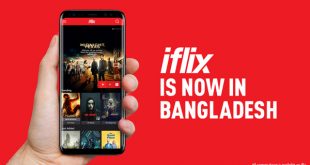PREMIUM: Tim Worner, the managing director and CEO of Seven West Media, talks to World Screen about Seven’s role in the Australian media landscape and his vision for the network.
WS: Over the years, what has Seven come to signify to Australian viewers? What does the Seven brand represent, and how is it different from other TV brands in the market?
WORNER: I think increasingly Seven is seen as the most Australian of the networks. Any television network’s brand is defined by its sub-brands, its programs, and in Seven’s case the programs have become more and more Australian. We are coming up on ten years as the leading network, so at the very least we feel there is an element of trust there from viewers. They see that big red seven and they know there is a very good chance they are going to enjoy a quality program. At most, we’d like to think viewers have grown to love Seven and keep coming back for more. We see our brand as warm, fresh—we don’t take ourselves too seriously, I don’t think and—as I said, Australian.
WS: What has kept Seven the leading free-to-air channel in Australia for so many consecutive years? What are the challenges in maintaining that position?
WORNER: We have a really strong group of creatives and they have become, I think, more and more effective at working together. Our biggest show is My Kitchen Rules and we have more people watching the show this year than we did in 2015. That is a fairly outstanding feat for a program in its seventh series. That sort of performance just isn’t possible if you haven’t got a production team on the show who is committed to making each new series fresh and exciting. There is never any thought of phoning it in with those guys. They challenge themselves and then work super closely with the promo team, the marketing and publicity teams and the schedulers to make sure that the audience is absolutely hanging out for the show by the time it arrives. It’s those qualities that seep through the entire organization, that notion of challenging yourself to do it better next time. Overlaid with that is a lack of fear. We have to take risks. There is no fear of failure. It’s OK to fail—in fact, we learn from it. What is not OK, obviously, is to fail repeatedly. But if we are not failing every now and then, we are not pushing the boundaries or discovering where they are.
WS: One of Seven West Media’s priorities is expanding its presence in content creation. How has Seven been achieving that goal?
WORNER: On the home front we are producing more and more content, and it’s not just for Seven. We are immensely proud of the period drama A Place to Call Home, which has been very successful for Foxtel. Internationally we have established 7Beyond in Los Angeles and 7Wonder in London. These joint ventures are growing rapidly; in fact, 7Wonder has just opened a second office in Birmingham. We continue to look for likely partners in other markets, and we are also forging ahead with plans to establish more production ventures that might be 100-percent owned by Seven. We’ve made huge strides in a very short span of time in terms of non-scripted, and we have recently turned our attention to scripted.
WS: Why will the ability to attract a mass audience become increasingly important as the audience continues to fragment?
WORNER: The more the audience fragments, the more valuable and precious the mass audience will become. It is that simple. So much of the focus has been on these smaller SVOD players who have comparatively tiny audiences. If you want to reach 3 million people with a powerful simultaneous message in Australia, there is only one way to do that and that is on Seven. Now that message may very well, if it is executed properly, ignite a social media storm, but it is exceptionally difficult to get that sort of exposure without television in some form or another being involved, and that usually happens right at the beginning, right at the genesis.
WS: What role do acquired programs and movies play across Seven’s various linear and nonlinear offerings?
WORNER: They still play a key role, and in some cases they can be a highly cost-effective way of hitting certain niche demographics. The thing is, acquired content—still mostly from the U.S.—is now more available than it has ever been before, and the owners of that content are now more intent than they have ever been on making it even more available. It stands to reason that the less exclusive content is, the less valuable it is.
WS: Seven has increased its investment in nonlinear services. Tell us about the AVOD offering, PLUS7. What does it offer, and how are viewers using it?
WORNER: PLUS7 is powered by Seven-produced content. It is the number one catch-up and now live streamed mobile destination in Australia. PLUS7 long-form streams have grown by 34 percent year on year and to record highs recently, with more than 6.5 million minutes streamed daily. Its phenomenal growth rate is in line with the way audiences are changing how they consume content across all screens.
Home and Away, our 7 p.m. weeknight strip, is the most caught-up show on Australian television. With some episodes on PLUS7, TSV [time shift viewing] increases by more than 20 percent from broadcast. We are seeing hard-core fans stack it and view it on the weekends, or catch up on it later at night or the next day on mobile on their commute.
WS: The SVOD service Presto is a joint venture between Seven and Foxtel. Why was that partnership important, and how has Presto been received?
WORNER: We are always looking at the way the market is changing and how we will respond to it. We need to keep the pace of change inside our business in line with what is happening out there in the market. It was clear that SVOD was coming and we felt it was important to be in the space. In Foxtel we found the perfect partner with experience, the necessary technology platform, the billing system and, most importantly, fantastic content. It has been a joint venture with strong commitment from both partners. For us it is yet another window for our produced content, and the most successful subscriber driver to date has been “An Eye for an Eye,” the special bubble episode of Home and Away.
WS: What growth potential do you see in new forms of content delivery such as mobile?
WORNER: Mobile is the growth opportunity. For the first time, in 2016, we can now measure it far more accurately than ever before, and we can therefore monetize it far more effectively. The first results are in and, as expected, the viewing of our content on screens other than the home television is exploding. Some shows like My Kitchen Rules are being viewed on mobile devices three times more than they were last year, meaning that the on-demand audience is three times bigger. This is a huge opportunity for our company.
WS: What is the state of the ad market in Australia, and what is Seven’s share? How willing have advertisers been to move to digital platforms?
WORNER: The state of the Australian ad market is that it is a short-term market, currently driven by consumer confidence and macro global economics. The market is currently expected to grow overall in the low single digits across 2016, driven by a federal election and the Olympic Games in the second half of the calendar year.
Television dominates advertising expenditure, with digital, outdoor and radio experiencing strong growth. Seven enjoys the dominant share of the television market, with 39 to 40 percent of metropolitan TV advertising.
WS: How willing have advertisers been to move to digital platforms?
WORNER: Advertisers are moving into digital willingly but are slower to take up the connectivity of content across screens in relation to TV content on all platforms. Instead they are adopting a silo approach to digital and traditional media. This, though, is rapidly changing, as measurement, education and return on investment become more prevalent.
 TVASIA
TVASIA

